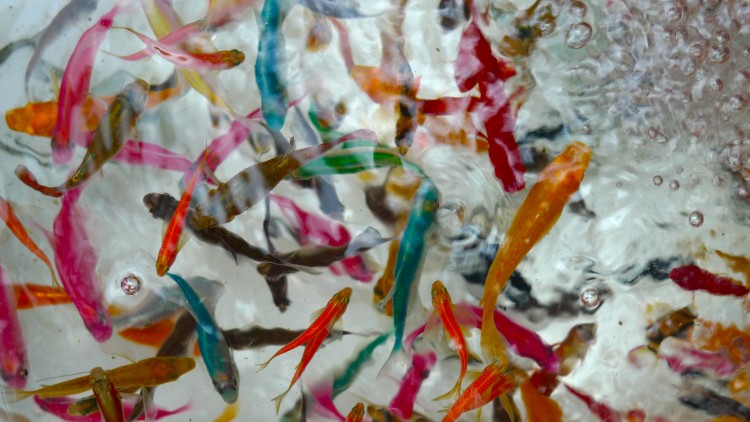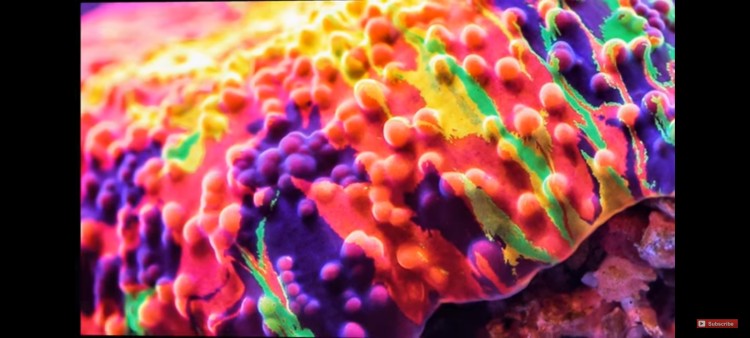Why You Should Avoid Dyed Or Deformed Fish
- Feb 06, 2022
- Rita
- 1281 0 0

Are you thinking of adding some new fish to your aquarium? You might notice some unnaturally brightly colored fish or even some that are deformed. If you’re thinking of getting one of these stunning or unique fish, you might want to think again. Here’s why.
How Fish Are Dyed
The process of dying fish to “enhance” their natural colors is an extremely cruel and despicable practice. Often times fish are dipped into a solution that strips them of their natural slime coating. This coating is meant to protect them against infections and external parasites.
After their slime coating is stripped, they are dipped into dye and then placed in a solution that irritates the skin to promote the regrowth of the slime coating. This process is very detrimental to the health of the fish and around 80% of fish don’t survive the process.
Those that survive have a reduced lifespan and are very sickly compared to undyed specimens. Sadly, this dying process isn’t even permanent. Often times the dye fades in a matter of months leaving you with a very sick, immune-compromised fish.
Another more invasive method of dying fish is by injection. The poor fish is literally stabbed multiple times with a needle to inject small amounts of dye under the skin. This is extremely stressful and painful to the fish. As a result of the dying, these fish often develop infections and immune problems that drastically shorten their lifespan.
Fish that are injected with dye often lose their enhanced colors in a matter of months as well. This means this poor fish went through all that drama for a few months of human entertainment.
Please do not support these despicable trends. It is extremely cruel.

By Pinke
Breeding Deformed Fish
Another trend that took off lately is the increasing popularity of deformed fish. Breeders literally select for deformities and breed these fish excessively.
In a healthy breeding population, you would normally avoid any deformed fish. These fish usually have a severely shortened lifespan due to a whole load of health problems caused by bad genes.
Some mutations are so extreme that they influence the ability of the fish to move around normally, see or even eat. It is extremely cruel to keep these fish. They usually just end up suffering.
Which Fish To Avoid
If you're wondering which fish are dyed or bred for deformities, take a look at the list below. Keep in mind that this list is not complete and only names the most common victims of these despicable practices.
Dyed fish
- Blood parrot cichlid (Amphiliphus citrinellus x Heros severus) also called Jellybean cichlid or cotton candy cichlid
- Some goldfish (Carassius auratus) also called Jellybeand or ice pop goldfish
- Indian glassfish (Parambassis ranga) also called Painted glassfish, colored glass tetra, Disco Fish, or Lightbulb tetra
- Oscars (Astronautus ocellatus) also called strawberry or blueberry oscars.
- African rift lake cichlids also called ice blue albino cichlids or zebra ice albino cichlids
- Some corydoras species
- Suckermouth catfish ((Hypostomus plecostomus) also called mixed color suckerfish or patriotic suckerfish
- Black tetra (Gymnocorymbus ternetzi) also called painted tetra or Berry Tetra
Deformed fish
- Any fish with bubble eyes (goldfish)
- Lionheads (goldfish)
- Exotic fish with missing fins, deformed heads, eyes, or other body parts (balloon mollies purple heart cichlids)
Conclusion
Now that you know a bit more about dyed and deformed fish you can see why it’s not a good idea to support these practices. Nobody wants to hurt their pets after all. If you see these fish sold anywhere, it’s best to inform the shop owner that you don’t support animal cruelty and will be taking your business elsewhere.
All the best of luck with buying your new aquarium fish.







About author